Homemade Coconut Milk
Homemade Coconut Milk – creamy white non-dairy coconut milk made from fresh coconut OR with coconut flakes. A great addition to soups, stews, curries, smoothies, and even baked goods. Fresh with rich taste and very versatile!
Feeling a little adventurous? Longing for something that is wholesome to kickstart the year?
Then run to the supermarket and grab yourself 2 or maybe 3 coconuts, but wait…ok, just a caveat, breaking coconuts might quite scare you, but fear not. Grab some unsweetened coconut flakes instead and head home.
You see, I started making coconut milk when I was about 12 years old to cook coconut rice (Oh, how I dreaded this process). We had to use a grater to grate the coconut and needless to say, it is NOT one of my favorite things to do. So as an adult, I completely wiped out this process from my memory, often resorting to canned coconut milk for all my cooking and baking needs.
But in this recipe, I will teach you T-W-O ways on how you can make your own coconut milk at home!
What is Coconut Milk?
Well, coconut milk isn’t MILK in the dairy sense like your regular milk in cartons. It is basically made from the shredded white meat of a coconut – that one you see when you crack open a mature coconut. It is then blended with water until smooth.
Coconut milk is often used in Southeast Asian cooking, Oceania, South Asia, East, and West Africa, the Caribbean and Latin America.
Coconut Milk Benefits
I’m no doctor, but from what I knew, if you’re following a dairy-free diet or plainly lactose intolerant, coconut milk should be your best friend.
But as always, coconut milk should also be in moderation. Although it’s naturally rich in fiber, vitamins C and E -among others- calcium and boatloads of other good stuff, you also need to take it in moderation as it contains high levels of calories and fats.
Coconut Cream vs Coconut Milk
Don’t be confused with these two. In general, the difference between coconut cream and coconut milk is their consistency. Coconut cream is much thicker, richer and fattier but with a lower water content than coconut milk. It is that thick, semi-solid stuff that floats to the top of a normal can of coconut milk. You can use it to add a nice thickness to any dish without affecting that much the flavor.
Then there’s coconut milk. It has a more translucent appearance that closely resembles to your usual milk. This is what we would usually use on soups, sauces, and baking goods.
This coconut milk contains a massive amount of calories, so use it sparingly or dilute with water, like the one you get at the grocery store.
How to Make Coconut Milk
I’ve been meaning to do a video for this recipe and finally, here it is. It’s how we usually do it back in Cameroon.
- Just crack open the coconut using the blunt side of a cleaver or hammer and then split it into two.
- As for getting the coconut meat, you can do the hard route by manually carving it out from the shell OR placing it in the oven for about 10 minutes at 350 degrees F to loosen up the flesh off the shell.
- Chop the coconut meat, add water and blend until a fine consistency.
- Using a cheesecloth, sieve the mixture and squeeze really tight to extract all the milk. And there you go!
Coconut Milk Recipes
Just our little secret, I could actually drink up this fresh homemade coconut, but not the canned coconut milk. The homemade one just tastes SO AMAZING! But aside from drinking it straight off the bottle, you can also use it to make the following below:
- Braised Chicken in Coconut Milk
- Coconut Cream Pie
- Coconut Rice
- Coconut Bread
- Samoan Coconut Bread Rolls (Pani Popo)
- Coconut Shrimp
Watch How To Make It
[adthrive-in-post-video-player video-id=”ONIMrOfL” upload-date=”2019-11-12T03:13:16.000Z” name=”Homemade Coconut Milk” description=”Homemade Coconut Flour and Milk – homemade coconut milk and flour made from fresh coconut OR coconut flakes. Fresh, tasty and so versatile!”]

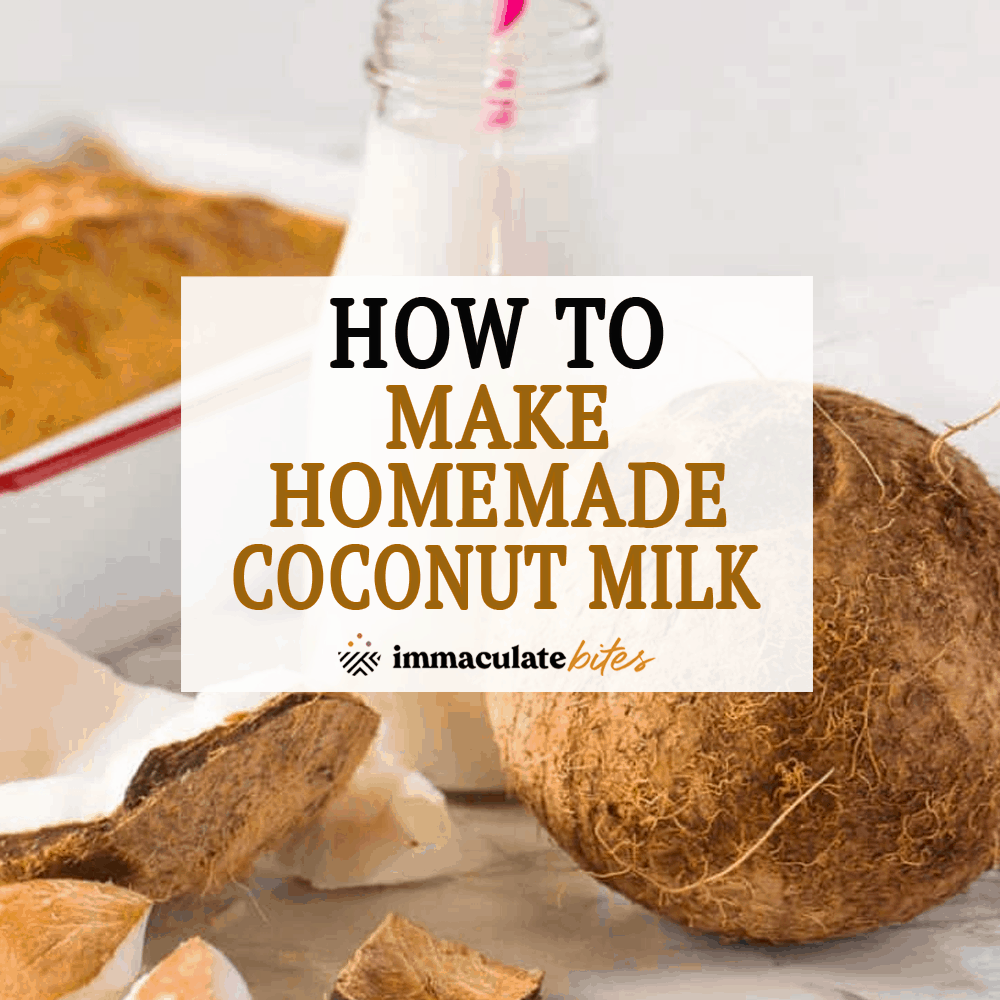
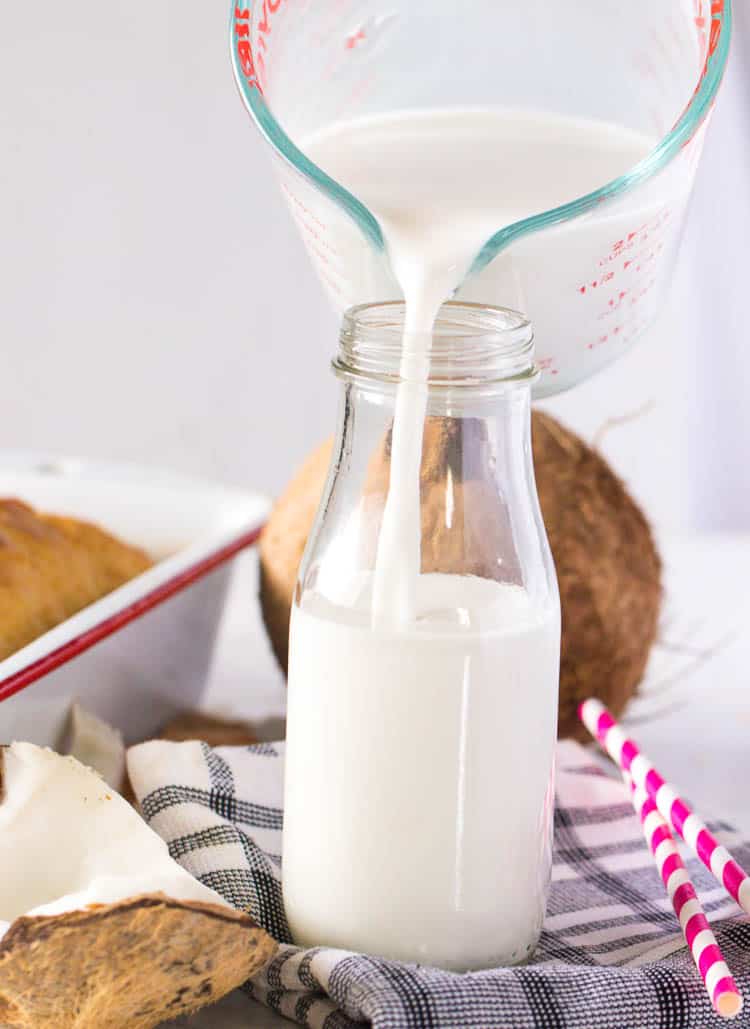
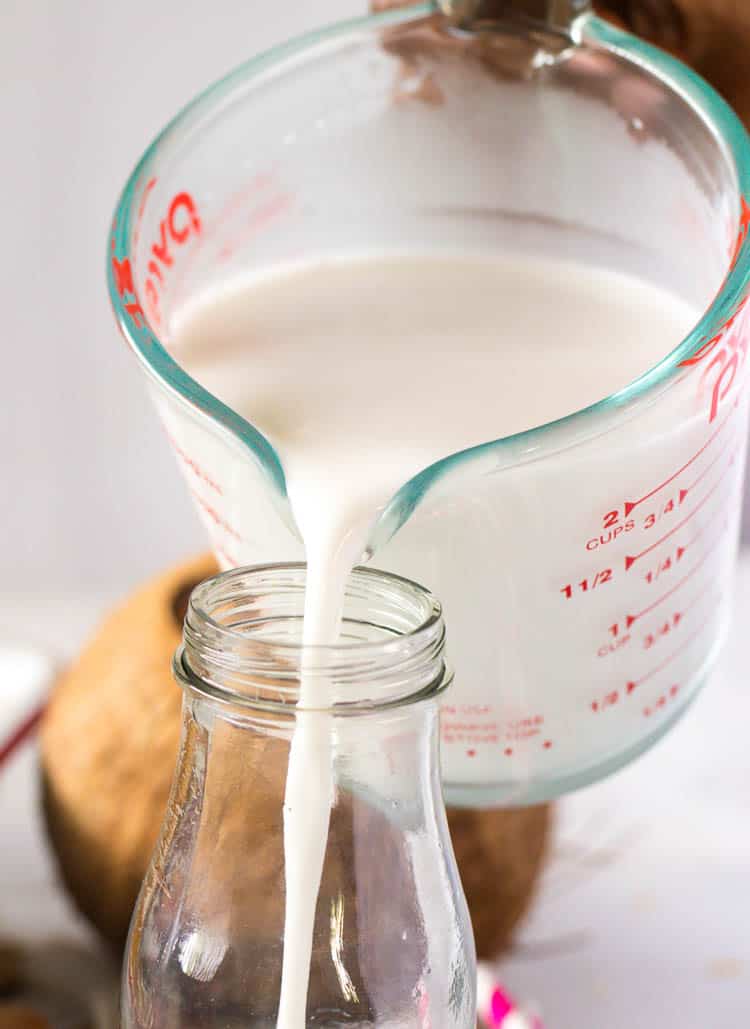
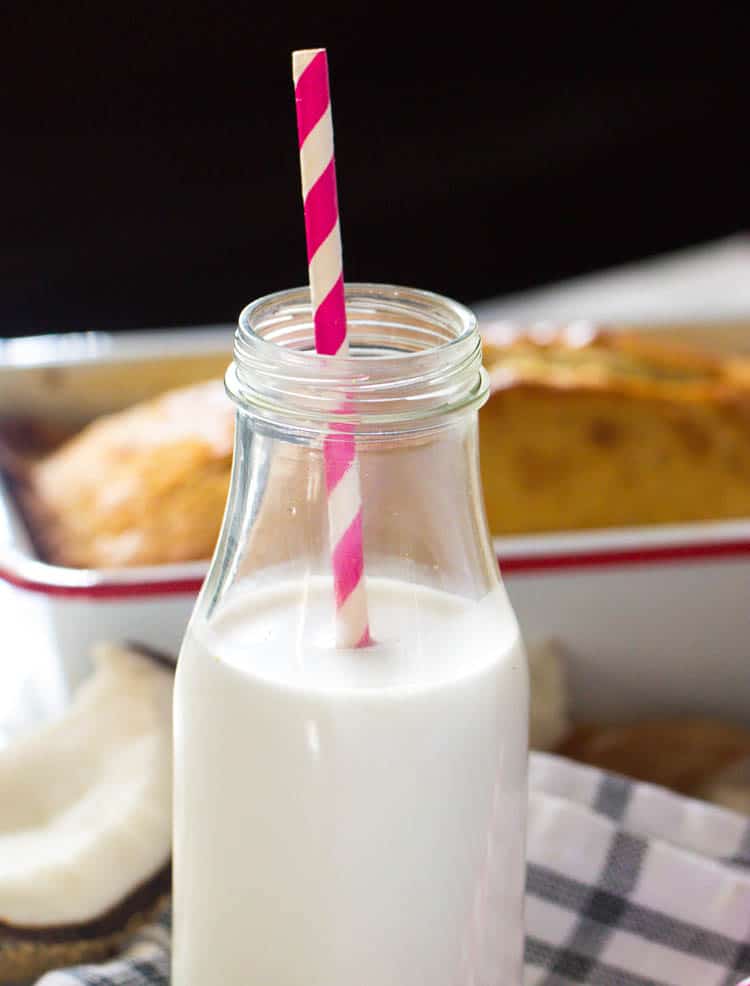
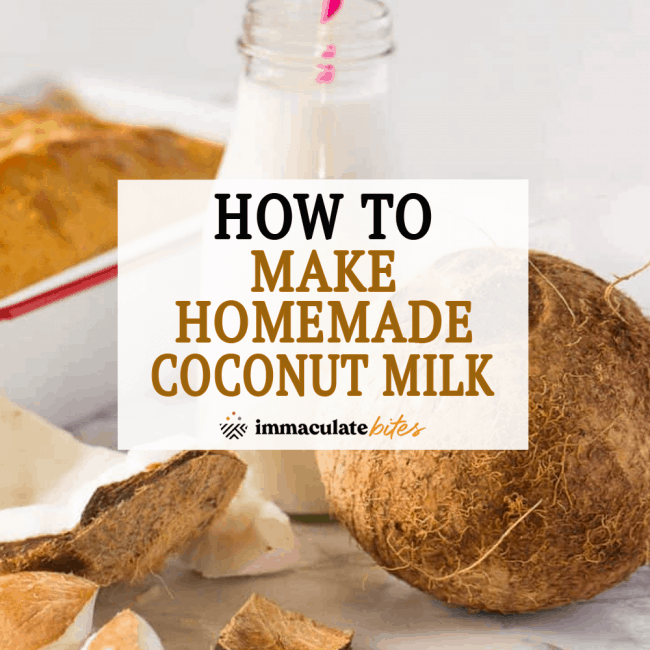
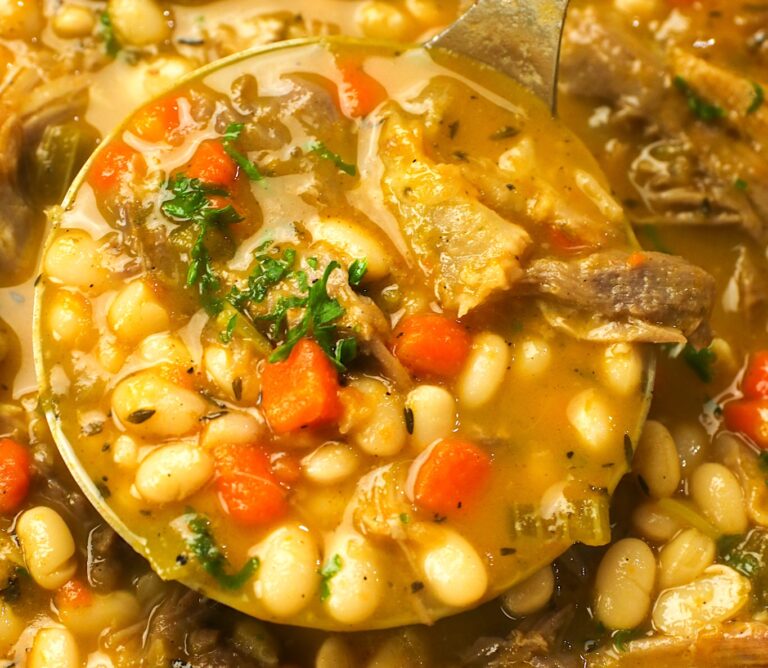
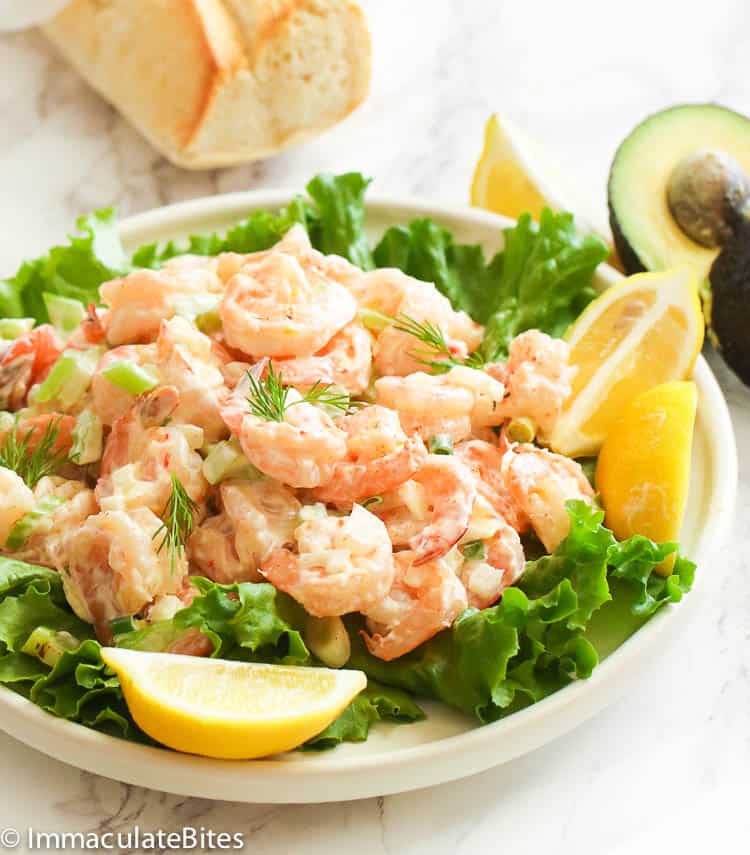
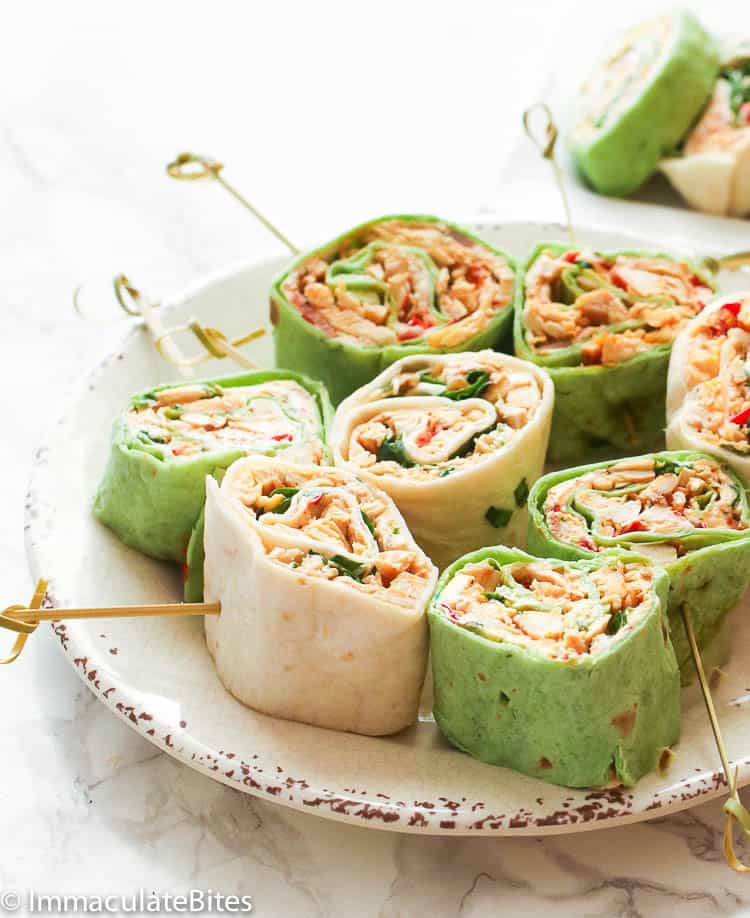
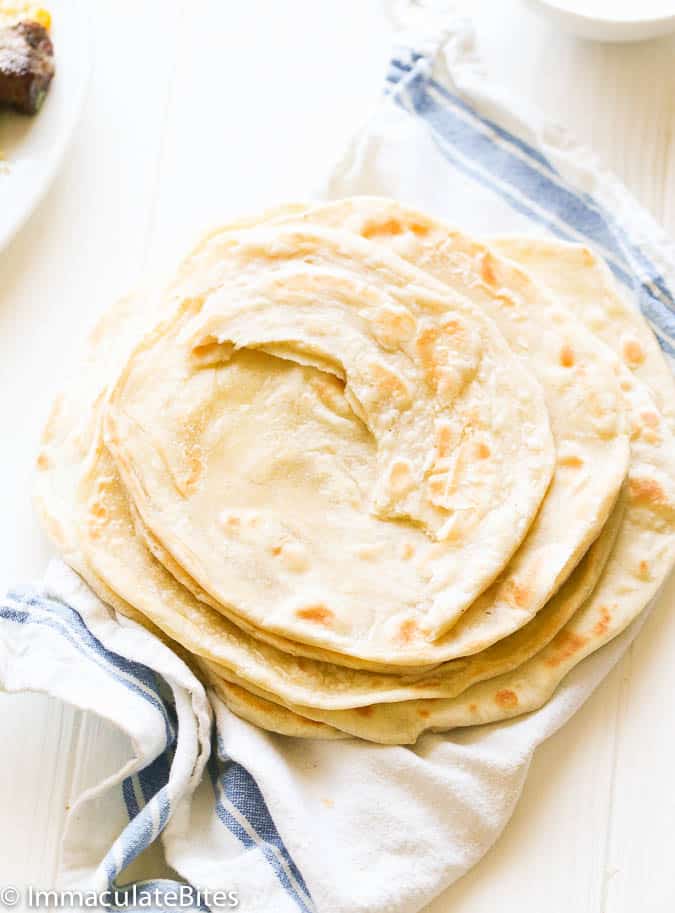
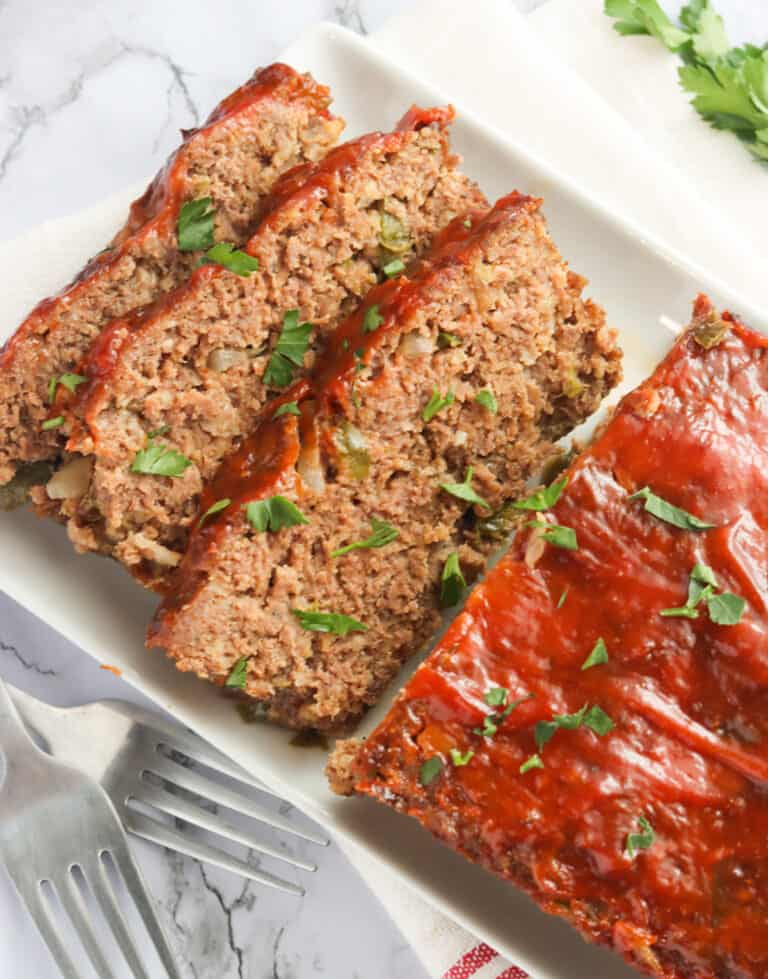

How long can u preserve the milk?
It will last about a week.
Will be making this! I do see many reviewers speaking about you coconut flour recipe, but I don’t see that here or when I search your site. Can you provide a link to it?
Hi kira,
Don’t have the coconut flour recipe listed anymore. Since I really don’t use it that much and would not be able to offer feedback on it.
Thanks a lot. I normally make my coconut milk the same way but little did I know that I can make my own coconut flour coconut from the left over pulp which will normally through away after squeezing the milk. Thanks a lot.
You’re most welcome, Bridget! Thanks for dropping by.
Hello, thank you for sharing this useful information, I can’t wait to try it! I am just wondering roughly how much milk and flour can you make using one Coconut?
Roughly about 2 cups of coconut milk (more of a cream).You can dilute even further depending on preference. It makes roughly about 2 cups of flour
Hey! I just made this with shredded coconut! I got my remains in the oven now and the milk is in the fridge. Question.. the milk has seperated, is this normal? It’s clear at the bottom and generally it doesn’t have much of a coconutty flavor. Is this normal? Thank for the recipe!
Nicole , it is normal for the milk to seperate and yes, coconut milk has a mild coconut flavor not too over powering. Hope this helps!
I thank you immensely for this post! I am just out of school and am on a tight financial budget. I have long stocked coconut flakes in my pantry for regular use along with canned coconut milk, and never new the process of making coconut milk and flour. I followed your instructions literally the moment after I read this post and the coconut milk tastes divine. Coconut flour is desiccating in the oven as we speak. Thank you again!
You show cheese cloth in the photos but I don’t see anything in the instructions regarding cheese cloth.
recipe updated . Thanks.
Natalie, sorry about the confusion ,store-bought coconut flakes do not need to be dehydrated before soaking it in water. After squeezing the milk from the coconut flakes then you dehydrate, if you want to make coconut flour. Hope this helps
Does the store bought coconut flakes still need to be dehydrated before you can make the milk? I am more interested in the milk than the flour and I am wondering why you would dehydrate the ground pulp just to soak it in water? Maybe I don’t understand the instructions. I am eager to try this, but the instructions don’t match the pictures.
I am new making my own Coconut milk, did it today. But I bought shreded Coconut, is Shreded Coconut ok, shreded and dehydrated. Milk test pretty good, put 1 teaspoon Vanilla extract in it
When I am brave enough I will try the real coconut
Do you think the coconut flour will turn out finer if you blend it in the vitamix?
I have never tried blending coconut using vitamin. However, I have used blendtec which is just as powerful.It will yield a fine grind but never like commercial coconut flour.Thanks for stopping by !
I’ve just run into your website. I really needed to learn how to make coconut/flour/milk/oilsince it’s not available in my country.
Thank you for sharing
Cheers from Argentina!
Ma Elisa , no coconut milk taste better than the one you make at home. You will truly enjoy it. Let me know if you have any questions
I always have a really hard time getting the coconut free from its shell, even with the oven trick. I tried it when another recipe recommended it, and it didn’t separate easily so I ended up leaving it in longer. Prolonged cooking weakens the coconut taste, and I still had trouble with the shell. Any thoughts on this? Your recipe looks great, by the way. I love the pictures.
Sarah, there is a tool for removing coconut “The Coconut Tool Stainless Steel Coconut Meat Removal Knife” available on amazon that does a good job removing coconut.You may want to try it.Thanks for stopping by.
I taste any can of coconut milk I open and pretty much all of them do not get a second taste. Canned just does not compare to fresh. And if it is not obvious, making coconut milk yogurt from a can of icky tasting coconut milk = yucky yogurt. I made that mistake once and then I had a quart of throwaway yogurt because nobody would eat it.
If you are interested in recipes using coconut flour and coconut milk, please visit my site at http://yummycoconut.com.
How do you make it flour without it turning into butter?
I dehydrated my coconut for 2 hours and it got pretty dry, but when I put it in my grinder it started turning into butter.
Is homemade flour grainier than the store-bought stuff?
Cristina, make sure your desiccated coconut is extremely dry before grinding it, it will prevent it from turning into butter. Keep in mind that you will not be able to get the same texture as storebought coconut flour-homemade coconut flour is definitely grainy. Let me know if you have any more questions.